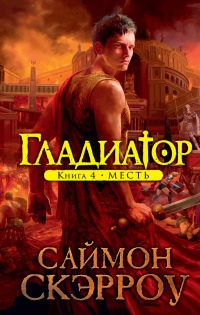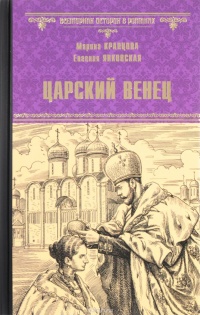Книга Османы. Как они построили империю, равную Римской, а затем ее потеряли - Марк Дэвид Бэр
Шрифт:
Интервал:
Закладка:
38
Andrew Peacock, ‘Sufis and the Seljuk Court in Mongol Anatolia: Politics and Patronage in the Works of Jalal al-Din Rumi and Sultan Walad’, in The Seljuks of Anatolia: Court and Society in the Medieval Middle East, ed. A. C. S. Peacock and Sara Nur Yıldız (London: I.B. Tauris, 2012), 206–226.
39
Мое понимание дервишей в этот период в значительной степени основано на информаци Ahmet T. Karamustafa, God’s Unruly Friends: Dervish Groups in the Islamic Middle Period, 1200–1550 (Salt Lake City: University of Utah Press, 1994).
40
Lewis, Rumi, 149–151.
41
Hodgson, The Venture of Islam, 2:498.
42
Encyclopaedia of Islam, THREE, s.v. ‘Baba Ilyas-i Horasani’, by Ahmet Yaşar Ocak, first published online 2015, http://dx.doi.org/10.1163/1573-3912_ei3_COM_24265.
43
Encyclopaedia of Islam, THREE, s.v. ‘Bektaş, Hacı’, by Thierry Zarcone, first published online 2012, http://dx.doi.org/10.1163/1573-3912_ei3_COM_24009.
44
Velâyetnâme, ed. H. Duran, Ankara, 2007, 282–290 (fols. 58a–60a), cited in Zeynep Yürekli, Architecture and Hagiography in the Ottoman Empire: The Politics of Bektashi Shrines in the Classical Age (London: Routledge, 2012), 32.
45
Yürekli, Architecture and Hagiography in the Ottoman Empire, 107.
46
Vilâyet-nâme: Manâkıb-ı Hünkâr Hacı Bektâş-ı Velî, ed. Abdülbaki Gölpınarlı (Istanbul, 1958), 71–75, cited in Cemal Kafadar, Between Two Worlds: The Construction of the Ottoman State (Berkeley: University of California Press, 1995), 30.
47
Aşıkpaşazade, Tevārīh-i Āl-i Osmān, 6.
48
The Book of Dede Korkut, trans. Geoffrey Lewis (New York: Penguin, 1972), 40–41.
49
Lindner, Nomads and Ottomans in Medieval Anatolia, 37–38.
50
Kemal Silay, ‘Introduction’, in Tac’d-Din Ibrahim Bin Hizir Ahmedi, History of the Kings of the Ottoman Lineage and Their Holy Raids [Ghaza] Against the Infidels, trans. Kemal Silay, ed. Şinasi Tekin and Gönül Alpay Tekin (Cambridge, MA: Harvard University Press, 2004), vii – xix.
51
Ahmedi, History of the Kings of the Ottoman Lineage, 1; Quoted in Pál Fodor, ‘Ahmedī’s Dāsitān as a Source of Early Ottoman History’, Acta Orientalia Academiae Scientiarum Hung. XXXVIII, no. 1–2 (1984): 41–54, here 47.
52
Ahmedi, History of the Kings of the Ottoman Lineage, 3–4.
53
Ahmedi, History of the Kings of the Ottoman Lineage, 4.
54
Kafadar, Between Two Worlds, 76–78.
55
Mehmed Neşri, Kitab-i cihan-nüma, Neşri tarihi, ed. Faik Reşat Unat and Mehmed Köymen (Ankara: Türk Tarih Kurumu, 1949), 78–79 and 92–95.
56
Aşıkpaşazade, Tevārīh-i Āl-i Osmān, 11, 12, 23–25.
57
Kafadar, Between Two Worlds, 85.
58
Halil Inalcik, ‘Timariotes chrétiens en Albanie au XV siècle d’après un registre de timars Ottoman’, Mitteilungen des Österreichischen Staatsarchivs 4 (1952): 118–138; Halil Inalcik, ‘Stefan Duşan’dan Osmanlı İmparatorluğuna: XV. asırda Rumeli’de hıristiyan sipahiler ve menşeleri’, in Mélanges Fuad Köprülü (Ankara: Dil ve Tarih Coğrafya Fakültesi, 1953): (1954): 104–129; Ahmet Yaşar Ocak, ‘Social, Cultural and Intellectual Life, 1071–1453’, in The Cambridge History of Turkey, vol. 1, Byzantium to Turkey, 1071–1453, ed. Kate Fleet (Cambridge: Cambridge University Press, 2009), 353–422, here 364.
59
Уильям Шекспир. Генрих V, действия 4, сцена 3.
60
Aşıkpaşazade, Tevārīh-i Āl-i Osmān, 13.
61
Aşıkpaşazade, Tevārīh-i Āl-i Osmān, 4–5.
62
Aşıkpaşazade, Tevārīh-i Āl-i Osmān, 15–17; Leslie Peirce, The Imperial Harem: Women and Sovereignty in the Ottoman Empire (Oxford: Oxford University Press, 1993), 34–35.
63
Imber, The Ottoman Empire, 1300–1650, 254–255.
64
Caroline Finkel, Osman’s Dream: The History of the Ottoman Empire (London: John Murray, 2005), 7.
65
Tezcan, ‘The Memory of the Mongols’, 28.
66
Ahmedi, History of the Kings of the Ottoman Lineage, 6.
67
Цитаты из этого параграфа из The Adventures of Ibn Battuta, 151–152.
68
G. Georgiades Arnakis, ‘Gregory Palamas Among the Turks and Documents of His Captivity as Historical Sources’, Speculum: A Journal of Mediaeval Studies 26, no. 1 (January 1951): 104–118, here 106.
69
Arnakis, ‘Gregory Palamas Among the Turks’, 108.
70
Aşıkpaşazade, Tevārīh-i Āl-i Osmān, 36.
71
Lindner, Explorations in Ottoman Prehistory, 35–56.
72
Aşıkpaşazade, Tevārīh-i Āl-i Osmān, 36.
73
Kafadar, Between Two Worlds, 126.
74
Uli Schamiloglu, ‘The Rise of the Ottoman Empire: The Black Death in Medieval Anatolia and Its Impact on Turkish Civilization’, in Views from the Edge: Essays in Honor of Richard W. Bulliet, ed. Neguin Yavari, Lawrence G. Potter, and Jean-Marc Oppenheim (New York: Columbia University Press, 2004), 271.
75
Kafadar, Between Two Worlds, 131.
76
Rudi Paul Lindner, ‘Seljuk Mints and Silver Mines’, Turcica 41 (2009): 363–371.
77
Lindner, Explorations in Ottoman Prehistory, 102–116.
78
Kafadar, Between Two Worlds, 131.
79
Hodgson, The Venture of Islam, 2:416.
80
Kafadar, Between Two Worlds, 136–137.
81
Aşıkpaşazade, Tevārīh-i Āl-i Osmān, 36–37. Мы не знаем, что случилось с

























